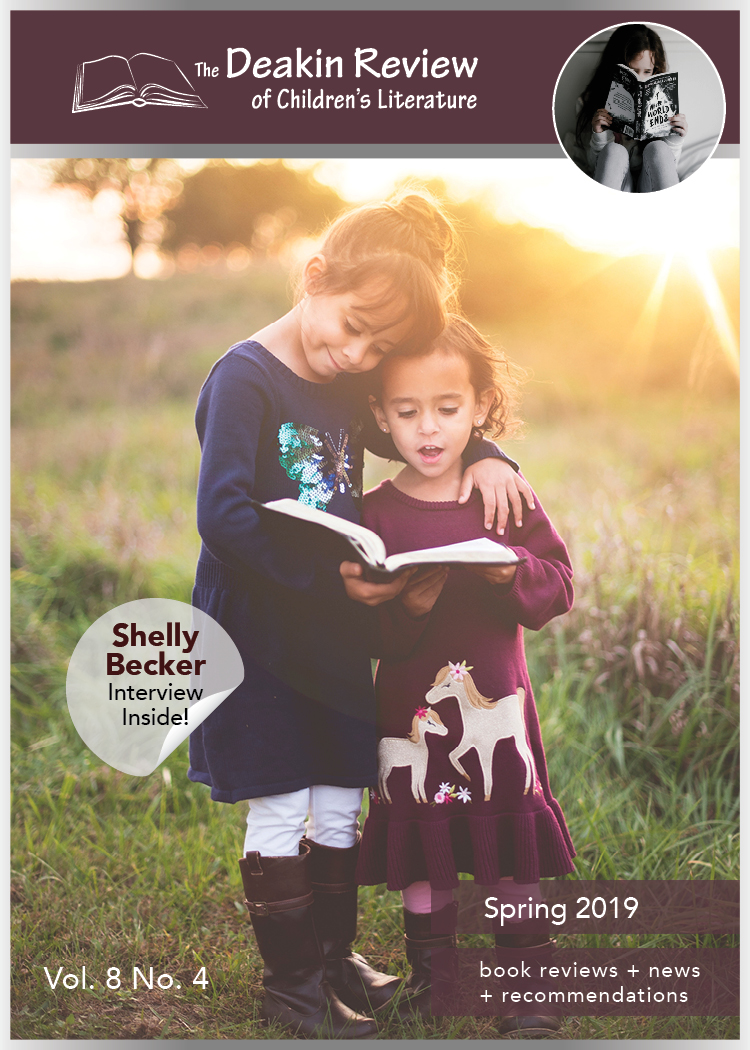The Deakin Review Is Grateful to Lynne Wiltse for Her Guest Editorial
DOI:
https://doi.org/10.20361/dr29457Abstract
***Access the interview with author Shelly Becker by clicking here.***
Dear Readers,
It is my pleasure to be contributing the editorial for this special issue of The Deakin Review of Children’s Literature.
My name is Lynne Wiltse and I am an Associate Professor in the Department of Elementary Education at the University of Alberta in Edmonton, Alberta. I teach courses in language and literacy and children’s literature. This is the third time that the graduate students in my Children's Literature in the Elementary School (EDEL 510) course have participated in writing book reviews for a Special Issue of the Deakin Review; however, this is the first time that they have been joined by undergraduate students from my Teaching Literature in Elementary Schools (EDEL 409) course. This term, I taught a combined undergraduate/graduate course, and the editorial team of the Deakin Review generously agreed to a special issue featuring book reviews by my 10 graduate and 20 undergraduate students.
We began our course by reading Kathy Short’s (2108) article, What’s Trending in Children’s Literature and Why It Matters. In her articles, Short identifies the increasing influence of visual culture in children’s books and continuing concerns about the lack of diversity in children’s literature as two recent trends. Regarding the first trend, the opportunity to evaluate picture books was linked to course content about visual storytelling and the design of picture books. In her article, Short makes the point that, because children are immersed in a visual culture, they find books with powerful visual images particularly appealing. This was certainly reflected in the selection of picture books, published in 2018, chosen by the 30 students in the course for review. An example can be found in Ocean Meets Sky, a finalist for the 2018 Governor General's Literary Award for young people's literature (illustrated books category), by brothers Eric and Terry Fan. You can read about the stunning visual images in this picture book about a young boy who sets sail to find the spot where the ocean meets the sky in Melinda Cooke’s review. Kathy Short notes that the influence of visual culture is evident in the increasing publication of wordless books in which the story is told completely (or almost completely) through visual images. In this regard, our collection includes I Walk With Vanessa: A Story about a Simple Act of Kindness, a wordless book by Kerascoet (the joint pen name of married illustrators, Marie Pommepuy and Sébastien Cosset). Terri Beach reviewed this book, told without words, about a girl who is bullied and then supported by school mates. That the students in this book comprise different ethnicities and races relates to the second trend in children’s books that Short highlights in her article. The author argues that the limited availability of books that reflect the diversity within society can be damaging for children who rarely see their lives represented within books. On this count, the books reviewed by my students were encouraging as they displayed diverse ways of being diverse, so to speak. Immigrant students may recognize themselves in Island Born, written by Junot Diaz and illustrated by Leo Espinosa, while young non-binary readers may identify with Julian is a Mermaid by Jessica Love. Girls, long underrepresented in children’s literature, may in particular be inspired by Roda Ahmedk’s and Stasia Burrington’s Mae Among the Stars, based on the first African American woman to travel in space, Hidden Figures: The True Story of Four Black Women and the Space Race, written by Margot Lee Shetterly and illustrated by Laura Freeman, and Chelsea Clinton and Alexandra Boiger’s, She Persisted Around the World:13 Women who Changed History. I am hopeful that these and other books reviewed by my students indicate a positive shift in the second trend regarding the lack of diversity in children’s literature. Short’s view is that, as educators, we are often followers, rather than creators of trends. I am confident that the teachers, librarians and prospective teachers from my course will contribute to this shift by thoughtfully selecting children’s literature for our diverse society.
Writing reviews for this issue was a valuable learning experience for my students and we are eager to see the published reviews. I am grateful to the editorial team of the Deakin Review for their support, and a special thanks is extended to Kim Frail for assisting me with the process and my students with their reviews.
Reference
Short, K. (2018). What’s Trending in Children’s Literature and Why It Matters. Language Arts, 95(5), 287-298.
Published
How to Cite
Issue
Section
License
Authors who publish with this journal agree to the following terms:
- Authors retain copyright and grant the journal right of first publication with the work simultaneously licensed under a Creative Commons Attribution License that allows others to share the work with an acknowledgement of the work's authorship and initial publication in this journal.
- Authors are able to enter into separate, additional contractual arrangements for the non-exclusive distribution of the journal's published version of the work (e.g., post it to an institutional repository or publish it in a book), with an acknowledgement of its initial publication in this journal.
- Authors are permitted and encouraged to post their work online (e.g., in institutional repositories or on their website) prior to and during the submission process, as it can lead to productive exchanges, as well as earlier and greater citation of published work (See The Effect of Open Access).







